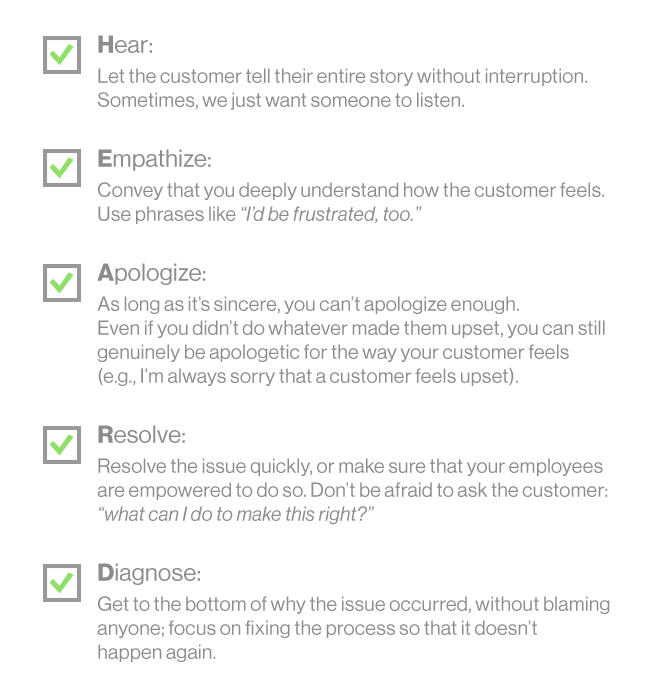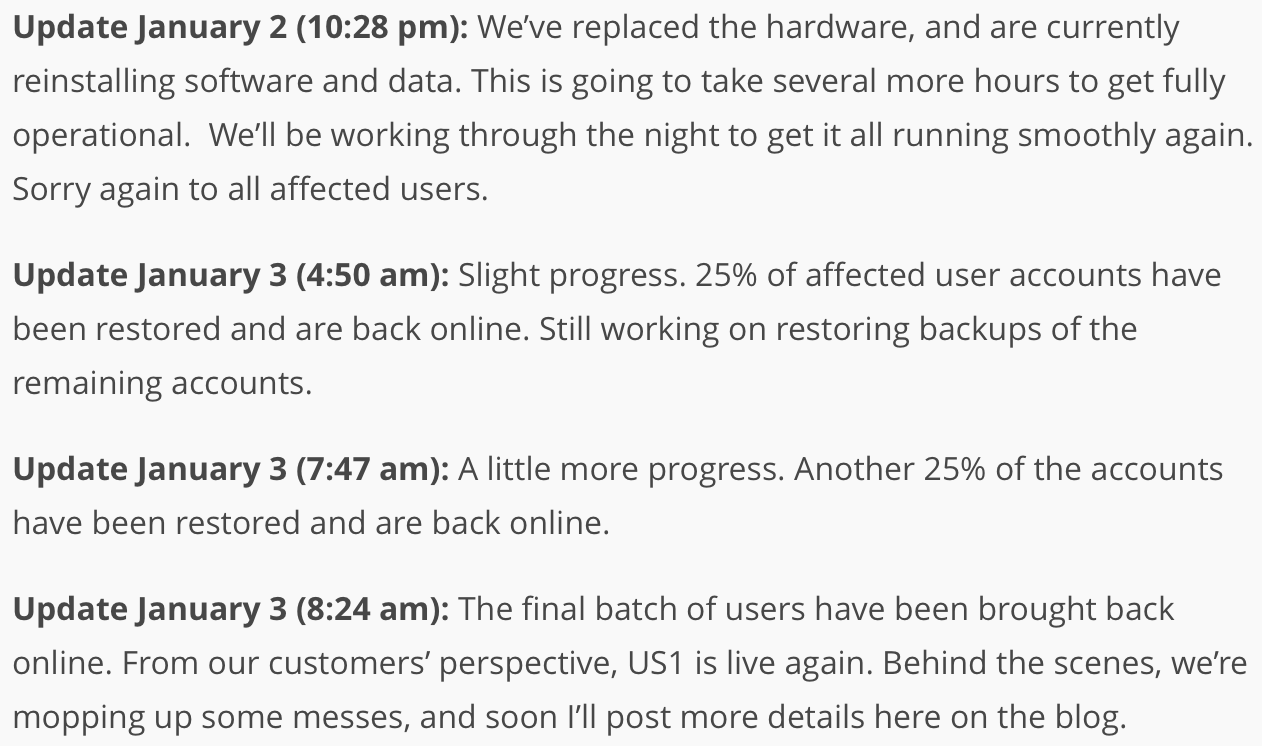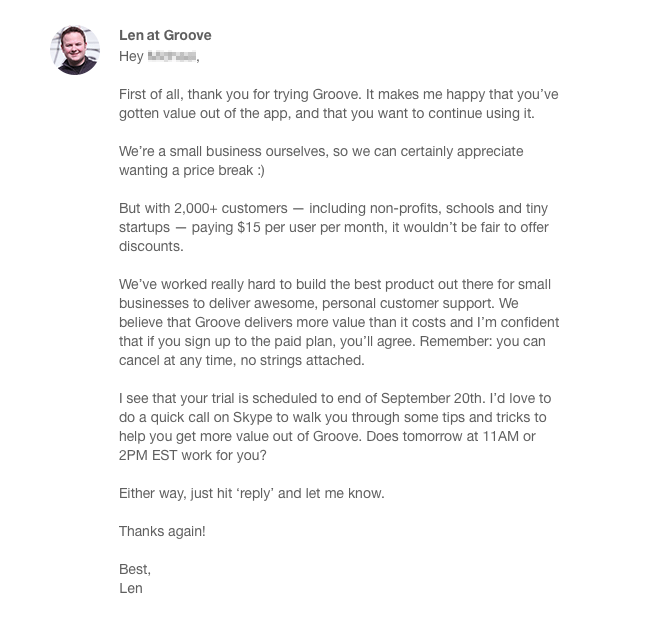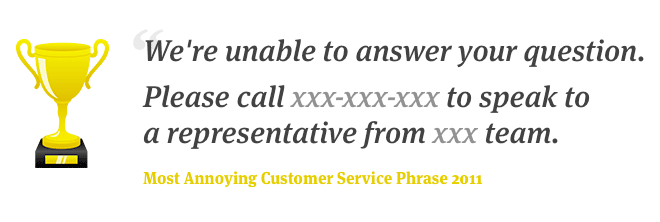"I've never done customer service before, but it seems easy enough."
That is—I wish I were making this up—an actual response to a question that I once asked a job candidate for a support position.
Needless to say, the applicant didn't get an offer.
But beyond that, the experience made me realize something: Customer service is a job where there's a massive difference between how difficult the job is and how difficult people who have never done the job before think it is.
That's probably one of the reasons why far too many people think it's okay to take their frustrations out on a support rep, whether they're related to the interaction at hand or not.
It's also one of the reasons that many people who get into customer service positions end up struggling with all of the unexpected challenges.
Today, I'm going to show you the seven most challenging scenarios faced by customer support agents, and tested techniques for handling each one.
1. Your Customer is Angry
If you're in customer service, you will come across angry customers.
Some are upset because they're confused. Some are upset because of a mistake that you or your company might have made (whether it's truly a mistake, or just a mistake in their eyes).
And some are simply having a bad day.
Getting defensive—or worse, trying to match the customer's emotion—will only escalate the situation.
But fortunately, there's a technique—developed and perfected by Disney, which hosts more than 135 million customers at its parks each year—designed to de-escalate interactions with angry customers and turn things around.
It's called the H.E.A.R.D. technique, and the easy-to-remember acronym stands for:

When you're faced with an angry customer, simply follow this checklist. Try and hear (or read) what the customer is truly upset about, without interrupting them. Express empathy and show them that you understand their frustration. Offer a heartfelt apology, even if you did nothing wrong. Do whatever it takes to resolve the issue, without being afraid to ask the customer what they feel the best resolution would be.
And when it's over, work to figure out why the problem occurred in the first place, so you can ensure that it never gets repeated.
2. There's an Outage or Other Crisis
Nothing is scarier than going through an epic business fail that causes you to risk losing the trust of your customers.
Server outages and security breaches can—and do—happen to anyone.
I always recommend that businesses have a crisis communication plan in place that outlines what the entire team should do in the event of an emergency, but when it comes to customer support, there are two key things to understand:
1. You're sorry. You're very, very sorry.
Even when you don't know what's happening yet, apologize to the customer for what they're going through.
Beverly Engel, the author of The Power of Apology, explains why apologies are so effective when it comes to mending relationships:
- "A person who has been harmed feels emotional healing when he is acknowledged by the wrongdoer. - When we receive an apology, we no longer perceive the wrongdoer as a personal threat. - Apology helps us to move past our anger and prevents us from being stuck in the past. - Apology opens the door to forgiveness by allowing us to have empathy for the wrongdoer."
Over communicate.
Normally, we limit the number of emails we send to our customers; after all, we don't want to annoy them.
But when things go awry, your customers want to know that you're on top of things, and that there's nothing in the world more important to you than fixing whatever is broken.
Constant updates via email, blog posts and social media—at least every 30 minutes until the issue is resolved—help to assure your customers that you're working on the problem. Follow MailChimp's lead: When they ran into crippling hardware issues at one of their data centers, they were in continuous communication with their customers:

Afterwards, publish a post-mortem or retrospective that outlines the problem, the steps you're taking to prevent it in the future, and another sincere apology. Here's a masterful example from Slack.
3. A Customer Requests a Discount You Can't Give
Discounting can be a dangerous tactic.
On one hand, offering a discount might be the motivation that some potential customers need to finally buy from you.
But on the other hand, by offering discounts, you risk devaluing the perception of your brand...once you offer a discount, it becomes more difficult to get people to buy from you at full price again.
At Groove, we don't offer discounts for that very reason.
But nobody likes to hear the word "no."
So when a potential customer asks for a discount, don't just turn them down. Instead, make it clear why you won't offer a discount, and use it as an opportunity to reinforce the value of your product (and potentially convert the requester into a customer).

4. A Customer Requests a Feature You Won't Build
Teams have limited resources. And the best product teams approach their roadmaps with a laser focus.
So there's a good chance that most feature requests won't be built anytime in the foreseeable future.
But just like the prospect asking for a discount, nobody likes to hear "no." And it's even worse to say "no" to someone who's already a paying customer.
Here, there are three techniques to remember:
Keep your tone positive. It sets up your message so it's received effectively.
Be personal. Templated rejections make us all angry.
Help the customer. If there's a workaround to get the functionality that the customer is asking for (or some other way you can make your product more valuable for them), show them.

5. A Customer Asks a Question You Can't Answer
I was recently booked on a flight that had a schedule change, and I wasn't going to be able to make it to the airport in time for the new flight.
When I called the airline, a recording told me that the hold time was more than an hour, so I asked their Twitter team, via DM, for some help.
Here's what they said:

Interestingly, a 2011 American Express survey asked people what the most annoying phrase in customer support was.
The winner?

Sounds oddly similar to the response that I got, doesn't it?
Good customer service isn't always about knowing the right answer. Often, it's about finding the right answer so that your customer doesn't have to.
Instead of shutting your customer out, let them know that you'll find the answer for them, and promise to follow up (so that they don't have to worry about it).

6. You're Overwhelmed by a Backlog of Tickets
This is a common occurrence (especially on Monday mornings) for support teams who don't have someone on duty 24/7.
Your support inbox is full, and there's no way you're going to be able to resolve all of these tickets fast. Many customers have been waiting for a response for a day or more.
While speed isn't the most important thing in customer service, it does matter.
In one Forrester survey, 41% of customers reported that they expect a response to a customer support email within six hours, and almost all customers expected a response within 24 hours.
Note that a response doesn't necessarily mean a resolution; the survey notes that many customers simply wanted to know that the business heard them and was working to resolve the issue.
So when you're backlogged with support emails, focus on buying yourself more time by responding rather than resolving.
That doesn't mean you should set up an autoresponder that tells customers that you're backed up, though. Remember that AmEx survey about the most annoying phrases in customer support? Well, the second most annoying phrase was some variation of: "We're sorry, but we're experiencing unusually heavy call volumes. You can hold or try back at another time."
Instead, write a personal email that tells the customer that you (not "we") will be taking care of them, and give them a hard deadline by which you'll help them.

This way, your customers get timely responses, and you buy yourself more time to resolve their issues.
7. You Have to Fire a Customer
Your product isn't right for everyone. And that's okay.
Some people's needs are better suited for a different solution. And some customers will never get what they need from your business. In both of these cases, your best course of action is to fire the customer.
But firing a customer can be daunting; how do you do it with grace and respect without making them angry?
Follow this simple four-step technique:
Be positive and appreciative. Thank the customer for giving you a chance.
Re-frame the situation. This is not about the customer's failings as a customer, but about your failings as a business to meet their needs.
Make the customer whole. Offer a full or partial refund to compensate for their frustration.
Apologize, and suggest an alternative. Give the customer an option that would make them happy, even if it's a competitor.

By going above and beyond, even when you're firing a customer, you can still save the relationship, and your company's reputation for excellent customer service.
Customer Service Challenges Won't Go Away
As long as you're working with customers every day, you'll continue to face the myriad of challenges that support brings.
But by being prepared with the tools and techniques to turn those challenges into opportunities to build better relationships with your customers, you can make your life—and theirs—a lot easier.
Now that you've learned the basics of customer support, it's time to find some tools to help you do customer support better. Take a look at the very best apps for supporting your customers.




